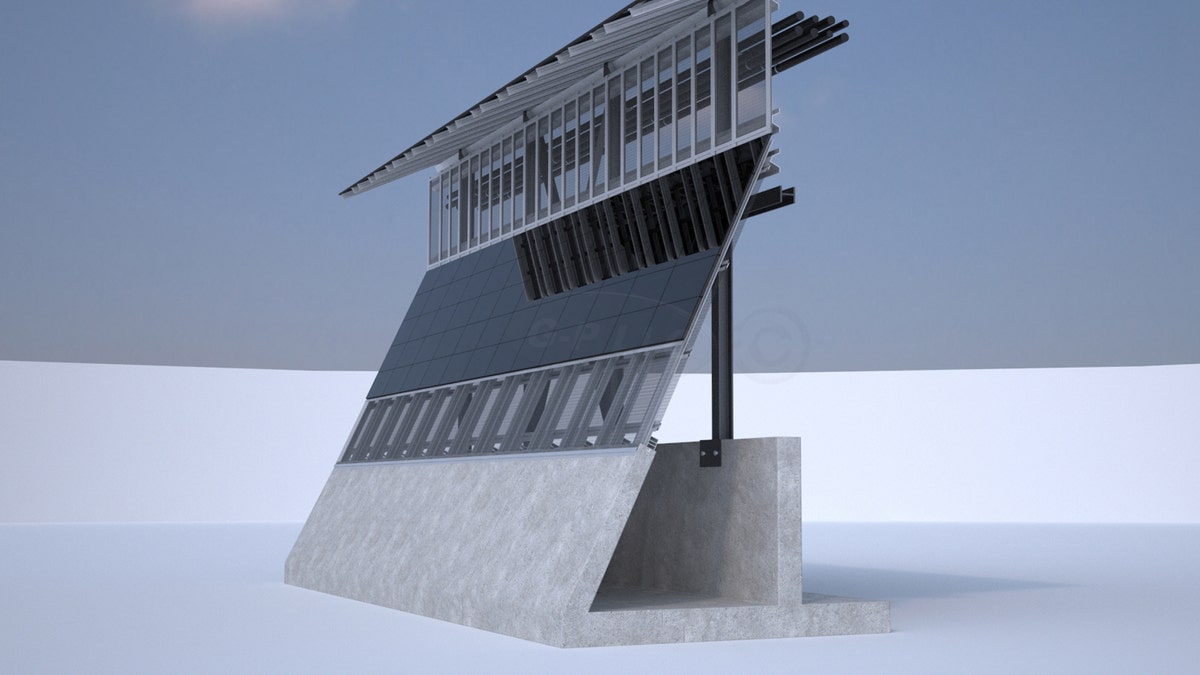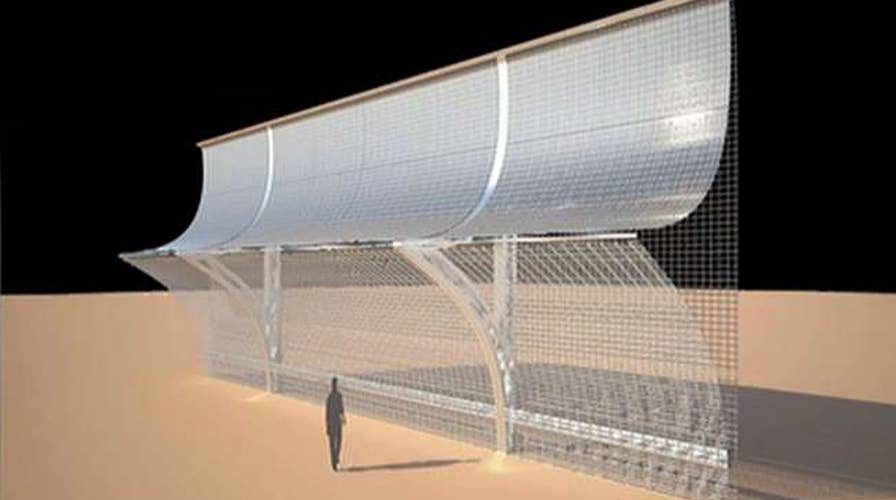Trump pitches solar-paneled border wall to GOP leaders
Bruce Blakeman of Sustainable Technology, Inc. provides insight
The agency in charge of U.S. border security plans to start building prototypes for President Trump’s proposed wall with Mexico later this summer.
Ronald Vitiello, Customs and Border Protection’s acting deputy commissioner, said Tuesday that four to eight companies will get contracts for prototypes in San Diego that could be models for the roughly 2,000-mile border. Companies will have 30 days to complete the models.
Vitiello says it’s impractical to build a wall on about 130 miles of border where there are already natural barriers, like lakes or canyons.
Trump’s budget proposal for 2018 includes $1.6 billion for 74 miles of wall in Texas’ Rio Grande Valley and San Diego. There are currently 654 miles of fencing.

This image provided by Gleason Partners LLC shows a rendering of precast border wall that incorporates solar panels into the design and that is 24-feet tall. President Donald Trump wants to add solar panels to his long-promised southern border wall - a plan he says would help pay for the wall's construction and add to its aesthetic appeal. The idea also was proposed by one of the companies that submitted a design to the government as a border wall prototype. The bid by Las Vegas-based Gleason Partners LLC proposed covering some sections of the wall with solar panels to provide electricity for lighting, sensors and patrol stations along the wall. Gleason said sales of electricity to utilities could cover the cost of construction in 20 years or less, and suggested that power could also be sold to Mexico. (Gleason Partners LLC via AP) (AP)
Earlier this month, Trump mentioned building the wall with solar panels.
“Think of it,” Trump told a crowd at a rally in Cedar Rapids, Iowa. “The higher it goes, the more valuable it is. Pretty good imagination, right?”
Trump has been criticized by some of his supports for what they see as a lack of attention to one of his key campaign promises. Construction has not begun and there has been resistance from Congress. The White House insists that the plan is on track.
Days after taking office on Jan. 20, Trump signed an executive order calling for a "physical wall along the southern border." But the order didn't include specific details or say how it would be funded or how much it might cost.
The Associated Press contributed to this report






















